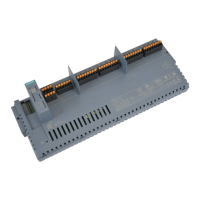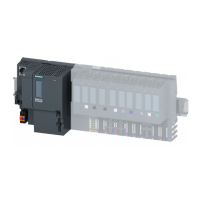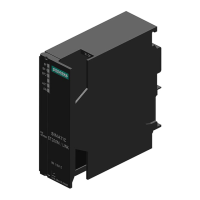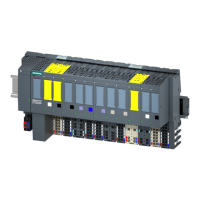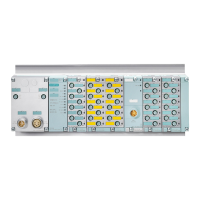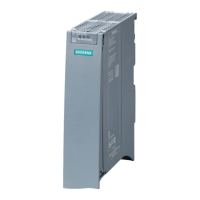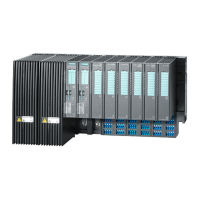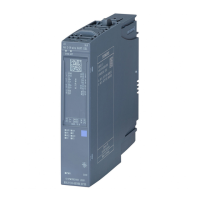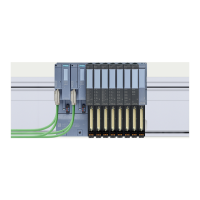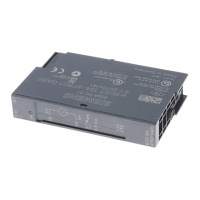Functions
3.4 Identification data
IM151-1 HIGH FEATURE interface module (6ES7151-1BA02-0AB0)
40 Manual, 03/2008, A5E01075975-02
Procedure
In order to start testing the options, set Bit0=1 in the first byte (AB x).
Proceed as follows in order to ensure the consistency of the 8 bytes:
● Write the first byte (AB x) last (for direct access with T PAB)
or
● First write the complete information of the control interface in the first byte (AB x) with
Bit0=0 and then set Bit0=1 in this byte in the subsequent OB1 cycle.
Alternatively you can use the SFC15 in order to achieve consistent transfer.
Note
Whenever any change in the 8 bytes of the control interface takes place, this information is
stored and used, even if non-relevant bits were changed (bits outside the preset
configuration).
3.4 Identification data
Definition
Identification data are data that are stored in a module for assisting the user in:
● Checking the system configuration
● Locating hardware modifications in a system
● Correcting errors in a system
Identification data enable modules to be uniquely identified online.
In
STEP 7
, the identification data are displayed in the "Module Information - IM 151" and
"Properties - DP Slave" tabs (see STEP
7
online help).
Reading of identification data
Users can directly access specific identification data by selecting Read data record. This
requires a two-stage access:
1. Data record 248 contains a folder that holds the data records associated with the various
indexes (see the table below.)
Table 3- 7 DS 248 structure for the ET 200S
List of contents Length (bytes) Coding (hex)
Header information
ID of content directory 2 00 01
Index of content directory 2 00 00
Length of successive blocks in bytes 2 00 08
Number of blocks 2 00 05
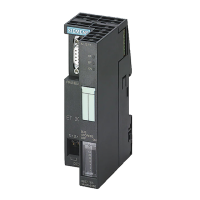
